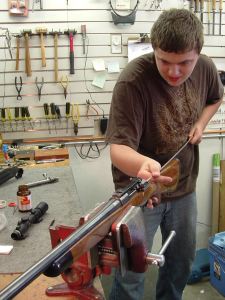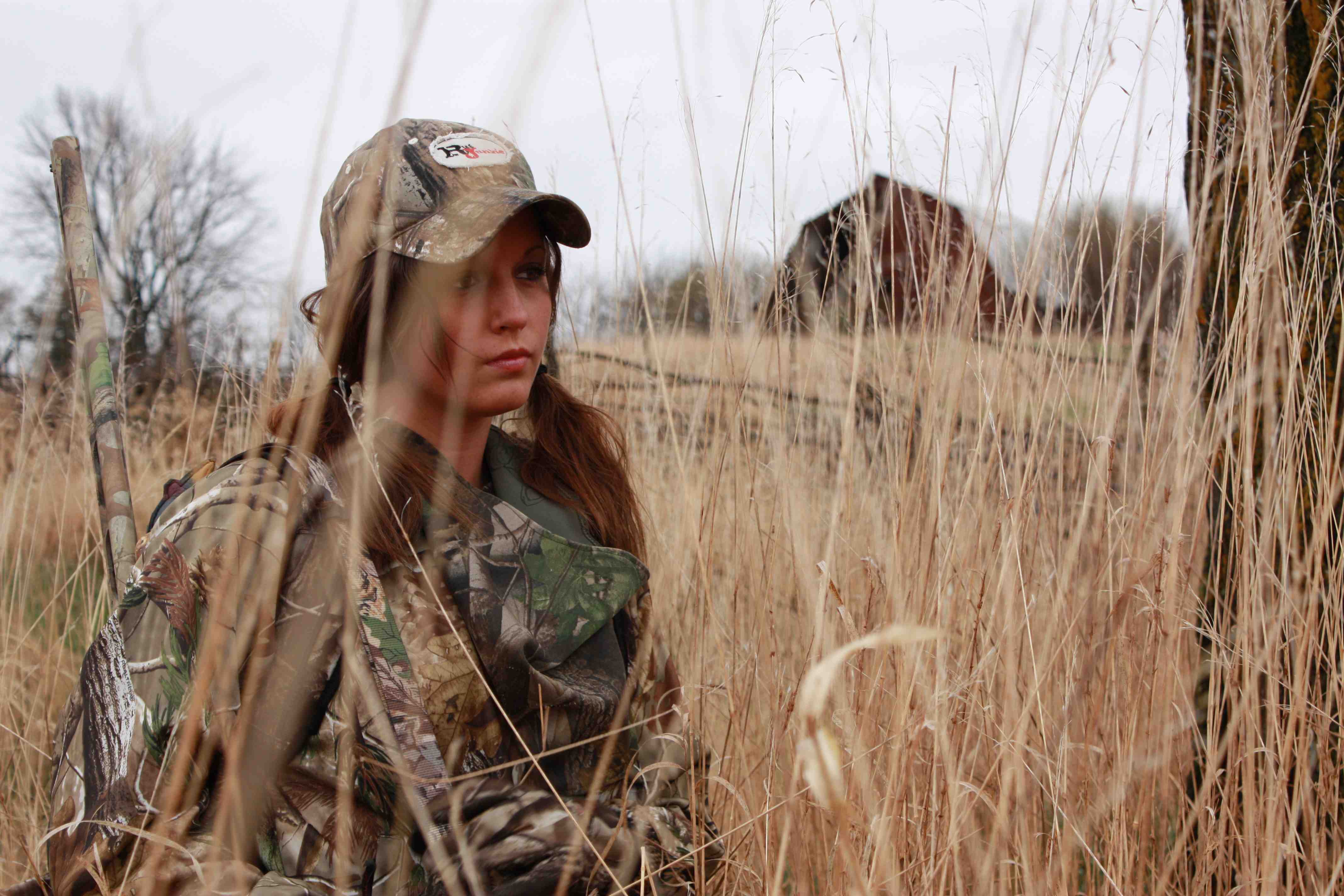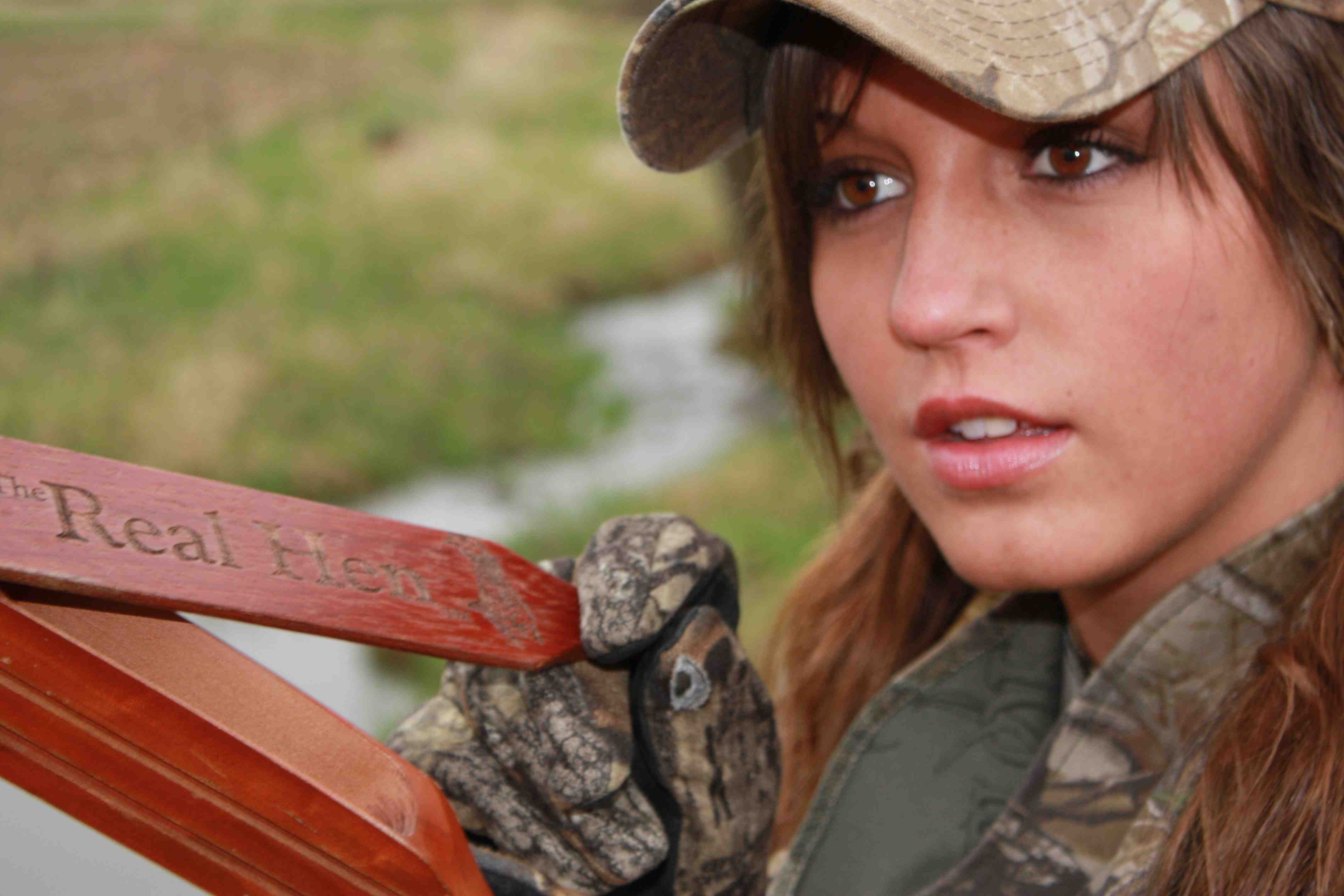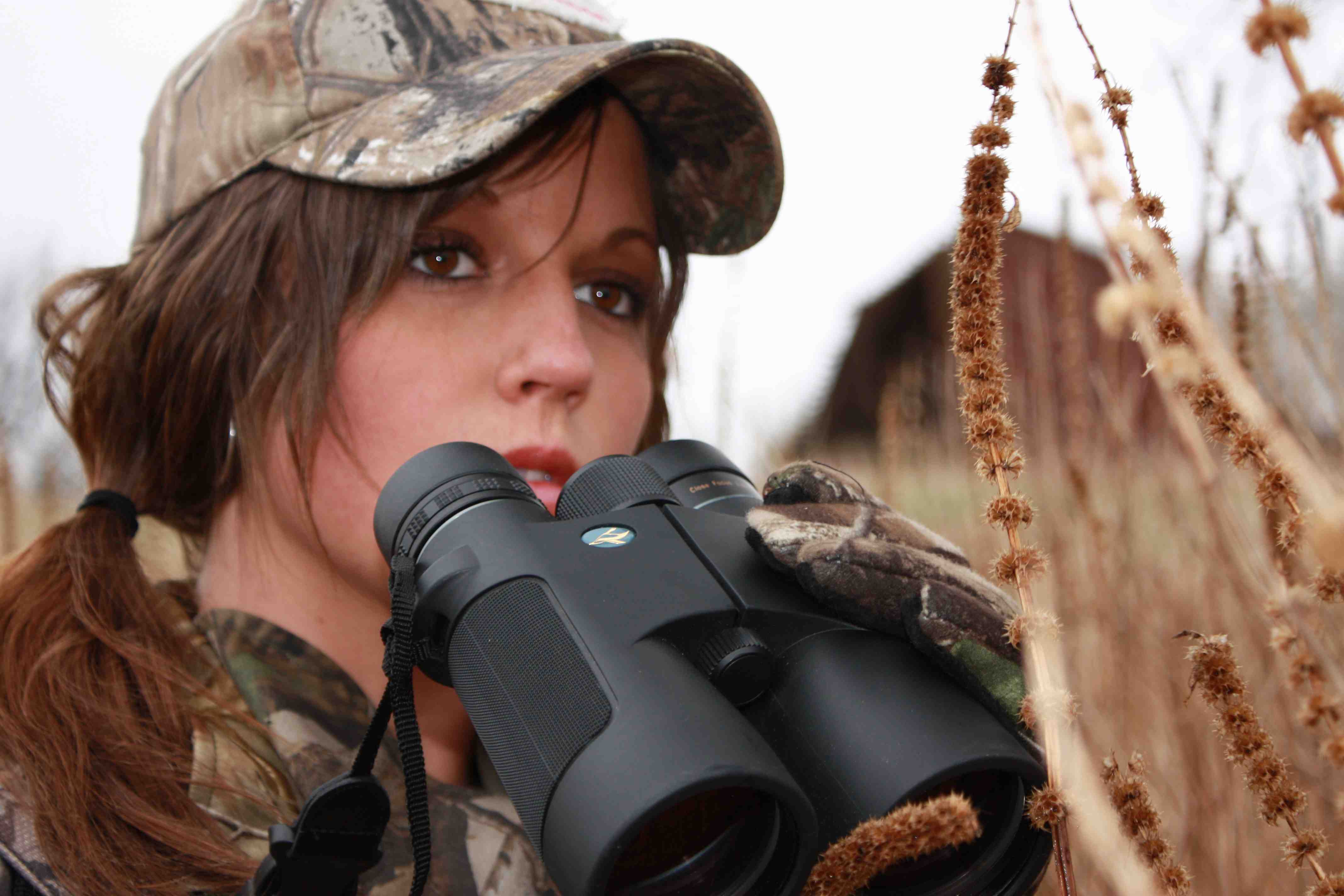 Long before husband and wife bow-hunting teams were part of the outdoor TV landscape and long before there were outdoor programs dedicated to getting women involved in the outdoors, Janice Maxfield was bowhunting. Janice fell in love with the sport when her boyfriend and future husband Joel Maxfield, introduced her to the sport.
Long before husband and wife bow-hunting teams were part of the outdoor TV landscape and long before there were outdoor programs dedicated to getting women involved in the outdoors, Janice Maxfield was bowhunting. Janice fell in love with the sport when her boyfriend and future husband Joel Maxfield, introduced her to the sport. “I grew up in a family that enjoyed the outdoors,” says Janice Maxfield. “As a child,
I fished with my brothers but it wasn’t until I met Joel that I got into bow-hunting. We
weren’t dating long before I realized if I wanted to spend time with him, I better take up bow-hunting because that was what he spent all of his time doing.” Things haven’t changed much in the last 20 years. Both Janice and Joel work for Mathews Archery. Janice is the new accounts manager, and Joel is the vice president of marketing. Since they work for Mathews, they probably get to hunt more than the average person. Even though Janice has been able to bow-hunt big game across the country, one of her favorite bow-hunting memories is when she tagged her first doe more than 20 years ago.
Janice recalled, “Joel and I often hunt near each other but not in the same stand. That was the case on this particular hunt. I was in the stand by myself and he was hunting another area. We were dating; I was 18 years old. When Joel pulled up to pick me up after hunting, I was already down from my stand waiting for him. He assumed I got cold and quit hunting. When he found out that I had shot a deer, he was so excited. He picked me up, hugged me, and twirled me around in a circle.”
Years have passed since Janice killed that first doe. Through the years, her passion for bow-hunting has grown. Janice and Joel have as much passion for bowhunting as anyone I have ever seen. Having spent some time with both of them, I can tell you that Janice is as hardcore as any bow-hunter you will find in the woods.
“I love bow-hunting and the sport of archery. I think shooting a bow and bowhunting are fun” she said. “I like being in the woods and enjoying the solitude that comes with it. I like the fact that bow-hunting season is long so I don’t feel rushed like I do when I’m gun hunting and there are only a few days to fill my tag. I also like being able to travel to different states to bow-hunt. Since the bow seasons are so long in most states, there is plenty of time in the fall to travel around and hunt.”
Janice gives a lot of credit to Joel for all he does to prepare them for the fall season.“Joel loves bow-hunting and preparing for the hunt. He spends a lot of time scouting and hanging the stands which makes it easier for
me,” Janice explained. According to Joel, he helps but he doesn’t have to hold her hand.
“Janice has been bow-hunting a long time and doesn’t really need my help. I spend a lot of time on the road in the fall and she goes out on her own and bow-hunts,” Joel said. “After all these years, one of the things that amazes me about Janice is her unique style of bowhunting. There are times she calls me and tells me she
shot a buck. I start asking her questions about the shot or where she is hunting. When she explains herself, I think to myself, ‘I don’t think I ever would have done it that way, but wow! Great thinking.’ She just has a way of getting the job done.”
Long before Mathews Archery, Joel co-owned an archery pro shop and Joel and Janice participated in a local archery league. Janice says that is where she fine-tuned her archery skills. “Joel has always been a great teacher but the local archery league we participated in years ago had a few women that were shooting in the league. Many of them took me under their wing and gave me a woman’s perspective on archery and bow-hunting. I think that really helped me when I was younger,” Janice noted.
One thing is certain: Janice, like many bowhunting fanatics, has taken her fair share of trophy bucks and is calm and collected in the process.
“I don’t often score the bucks I take. That isn’t the most important thing to me. I have taken bucks as big as 150 and like most hunters, I have to work very hard for the bucks I get. Many of the deer I have taken, I shot on the last day of the hunt or even the last half-hour of a hunt,” she said. “I am very patient and can wait if I have to. If you want to kill big bucks, you have to let the smaller bucks pass by and wait for the big
ones. I think I do a good job at that.”
There is no question that women, in general, are more patient than men ... and that is also true in the woods.
Janice and Joel have a son, Andy. Just like his mom and dad, Andy caught the bow-hunting bug. “One great thing about our family is we can go on hunts together. Joel spends a lot of time on the road hunting in the fall,” Janice said. “Andy and I meet up with him every chance we get so we can hunt together as a family. Andy has taken a number of different animals with a bow including whitetails and bear. Recently Joel took him on a bison hunt and he got a bison with his bow. That was really cool!”
Like all of us, Janice has a few deer hunting stories that stick out in her mind that she will always remember.
“A few years ago, my parents died a few months apart. My dad died in August and my mom died in December. I killed one of my biggest bucks that year in November before my mom died. My dad had just passed away and I didn’t feel like going on a hunt, but I went anyway. I tagged my buck on the first day of my hunt in Kansas. Joel and our son, Andy, were there so it was very memorable as a family. I rarely tag out on the first day so it was very special. It was like my dad was there with me. Joel filmed the hunt, which made it special because we rarely hunt side by side. Usually someone else is filming my hunts. I have now taken several bucks out of that stand.”
Janice recently took a mule deer buck at almost 60 yards. That hunt was also very memorable. “I have spent most of my time hunting whitetails so going out West to hunt mule deer was fun. Spot-and-stalk hunting is a lot different from sitting in a tree stand. We had a few blown opportunities during those six days before I actually scored, but in the end, I got a nice buck and had a great time,” she said.
Joel, Janice and now Andy have become familiar faces on Mathews TV, a show hosted by Dave Watson on the Outdoor Channel. Being on film has added a different dynamic to bowhunting for Janice.
“Being on film can be tough,” Janice said with a laugh. “Sometimes when I am being filmed I have to pass on shots I would usually take because the camera man doesn’t have a good view of the buck. Other times we have to quit early because of low light. Filming for TV isn’t always fun, but I will say it can be fun to look back at footage and relive a certain hunt. It takes away from the solitude a bit but over the last few years of being filmed, I am getting used to it and am fine with being on film now.”
When Janice started bow-hunting, Joel set up a bow for her that was designed for a man. All the gear she used was tailored towards men. Times have changed and Janice believes that is a good thing.
“When I got into bowhunting, there were some women in the sport but not many. Over the years, I have taken women under my wing and introduced them to the sport. It is much easier getting into the sport for women than it was 25 years ago. Now there are bows designed for women,” Janice said. “I think that is great and I always encourage women to get involved in archery and bow-hunting. It’s a great sport for
the entire family.”
In a day and age when so many bow-hunting folks want to be hunting celebrities and see their faces plastered all over television, it is refreshing to interview people like Janice and Joel. Both of them love bow-hunting, not fame. Janice is an accomplished bow-hunter who isn’t one to toot her own horn. In fact, she doesn’t talk much about her bow-hunting accomplishments unless others ask. The Maxfield family has built a life around the sport of bow-hunting and were just as passionate about bow-hunting before they worked for Mathews Archery. You might see Joel, Janice and Andy on TV but that is not what is important to them. Spending time together doing something they are passionate about is what is important to them. Bowhunting is one of those unique sports that can bring a family even closer together. It certainly has for
Janice, Joel and Andy.
By Tracy Breen










 Deer
hunting as a teen was rough. It just about killed me to have to forego hairspray
and makeup (dad assured me the deer would smell me from 10 miles away), although
I’m not sure who I thought I was going to see out in the back 40 of rural Ohio.
And don’t let the hunting clothes fool you, the pictures were taken post shower
and makeup. So there I was, a girl with a gun and a fair amount of vanity. At
least I was able to stay focused on my intentions once I settled into the
stand.
Deer
hunting as a teen was rough. It just about killed me to have to forego hairspray
and makeup (dad assured me the deer would smell me from 10 miles away), although
I’m not sure who I thought I was going to see out in the back 40 of rural Ohio.
And don’t let the hunting clothes fool you, the pictures were taken post shower
and makeup. So there I was, a girl with a gun and a fair amount of vanity. At
least I was able to stay focused on my intentions once I settled into the
stand.


